Hidden Dangers: Contamination from Toxic Landfill Sites throughout New Zealand
More people are moving out of urban areas, but what are the hidden dangers when living off-grid?
It’s great to be able to live ‘the dream’. Maybe you’ve already found that rare piece of land - out of reach of traffic noise and pollution, streetlights, spray drift, 5G towers and flightpaths... But is this soil we grow our vegetables in, really as ‘natural’ and nutrient-rich as we think? Are our honeybees really collecting pure, sweet nectar? What are the potential contaminants in our drinking water (even in an extra-deep bore)? And what other hazardous chemicals are lurking, probably invisibly, in our seawaters, lakes and rivers? As a follow-up to my chat with
about this topic, here’s some more myth-busting of that successful PR slogan ‘Pure, Green, 100% Pure New Zealand’…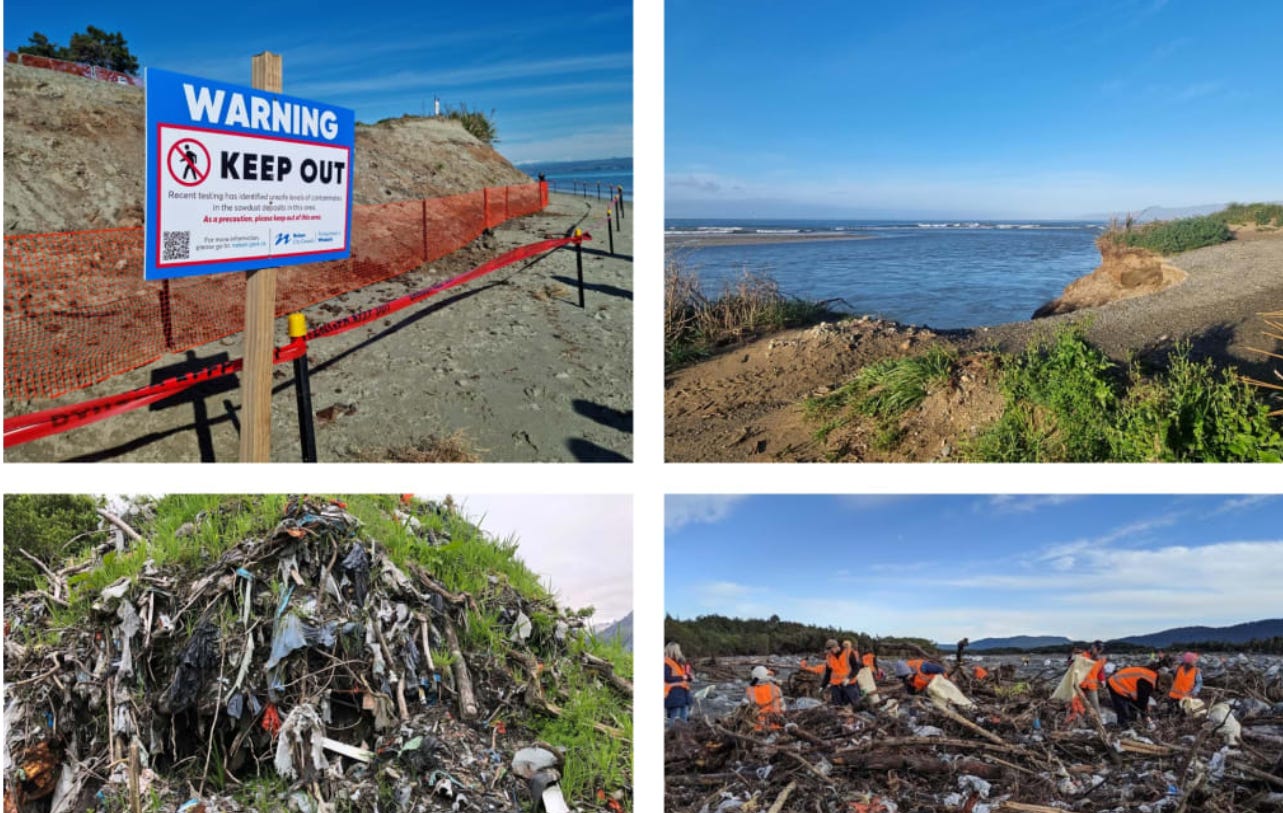
For decades, extremely hazardous chemicals have been dumped in New Zealand’s inadequate, unsafe landfill sites: chemicals that were already banned in the rest of the world. There was (is) little control or monitoring of these sites; many are situated in private farmland, not formally mapped.
Curious, I took advantage of a free soil test on my own ‘piece of paradise’ recently, and discovered an area with high levels of arsenic contamination. Urggghhh. I’m lucky, I can avoid planting or grazing that specific area, but what about those who don’t have that luxury, or worse, have no idea about the contamination of their soil? Arsenic is a common problem in New Zealand that can result from old sheep-dip sites, treated timber dumps and/or pesticide use.
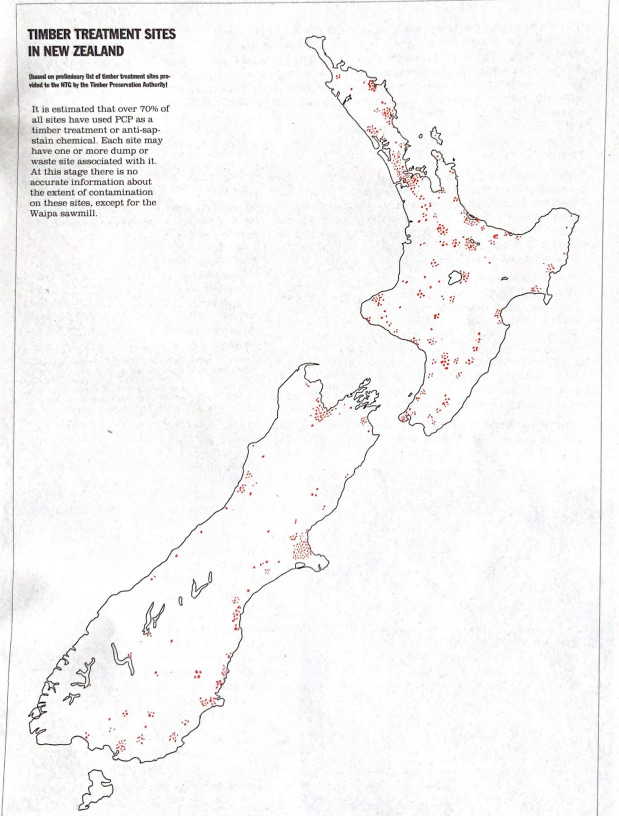
On the subject of pesticides, as well as these contaminated (work)sites, there are also numerous legal and illegal dumps of 1080 and other poisons (like anticoagulant, brodifacoum) commonly used for ‘pest’ control around New Zealand. Over the years, official sites at Auckland, Rotorua, Winton, Whanganui and Marton landfills have received hundreds of tonnes of unwanted 1080-poisoned food-baits. In this post, I describe incidents at each of these locations. As I mentioned, other sites were ‘unofficial’ dumping grounds, like farmland on the West Coast of South Island [1].
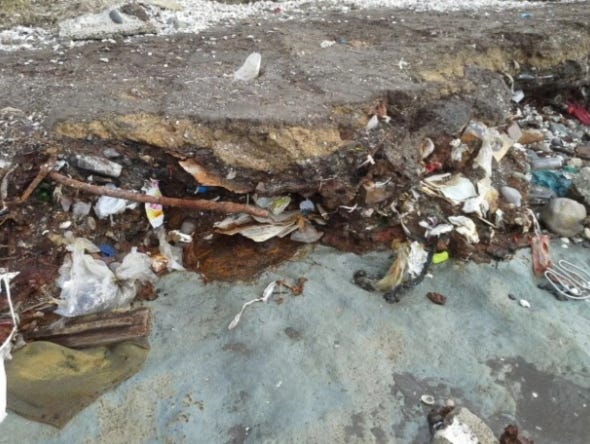
But first….
Why is 1080 poison buried in landfill?
To manufacture the pesticide, raw 1080 poison is mixed with cereal, green pigment dye and other substances like sugar and cinnamon and coated with a ‘sealer’. The bait manufacturers claim the shelf-life of the toxic pellets is limited. Depending upon the storage environment, damp and mould can affect the palatability (yuck) and structure of the baits, which can mean the poison is unsafe (!), ineffective and/or unsuitable to be distributed by hand or aerially via the helicopter hoppers [2]. What happens then? In a perfect example of Orwellian Doublethink, the toxic baits that were destined to be dropped indiscriminately over land and water, are redefined as ‘hazardous waste’ and have to be disposed of ‘appropriately’. But they can’t be incinerated (like the unwanted covid injectables) as that would produce highly toxic gases. Remember: there is no antidote for 1080 poison.
The only academic article: toxicity of 1080 poison in landfill
Back in August 1996, over 12 tonnes of highly toxic 1080 poison baits were buried in a purpose-dug pit in a landfill site at Winton, central Southland. In a typically poor-quality academic paper (but importantly, the only one of its kind) about the fate of this toxic waste (Bowman 1999, see full pdf at the end of this post) two shallow testing bores, sited 5 and 13 metres from the dump were sampled weekly for 5 weeks and then monthly, until the study ended, at 13 months. (NB diagram in that paper was conveniently not drawn to scale).
Unsurprisingly, 1080 poison was found to be present in 5 of the 28 groundwater samples. NZ Dept of Conservation (DOC) claimed the levels of 1080 concentrations in those samples (except for one result) were ‘low’. But even the World Health Organization (WHO) state zero is the only ‘safe’ level of 1080 poison contaminated water. The public health studies simply have never been carried out. We also know that the water tests carried out at that time were based on a scientific methodology from the 1980’s which only looks for the fluoroacetate, not the toxic metabolite of 1080: fluorocitrate. Something
writes about. And this methodology continues to be the only lab test available today that is conveniently ‘endorsed’ by NZ Government. (sound familiar?)For decades, the results of these outdated tests have skewed the risk assessments for 1080 contamination, by falsely claiming the poison has miraculously ‘disappeared’. (“Safe and Effective” I hear you say).
Despite its weaknesses, Bowman’s write-up of the Winton landfill site experiment shows 1080 poison was first detected in the nearest bore after 5 weeks and the more distant bore after 16 weeks. In other words, it took a long time for the poison to filter through the soil, yet still be detected. It was unclear from the study whether any soil tests were carried out. So the potential negative impact from 1080 poison on the soil and the micro-organisms within it, were never investigated. Indeed, this subject of soil contamination remains another significant gap in the scientific knowledge. One of the few authentic scientists to sound the alarm about the harms to soil micro-organisms from 1080 poison was Dr Robin Wakeling. He is now also truth-speaker in the covid era:
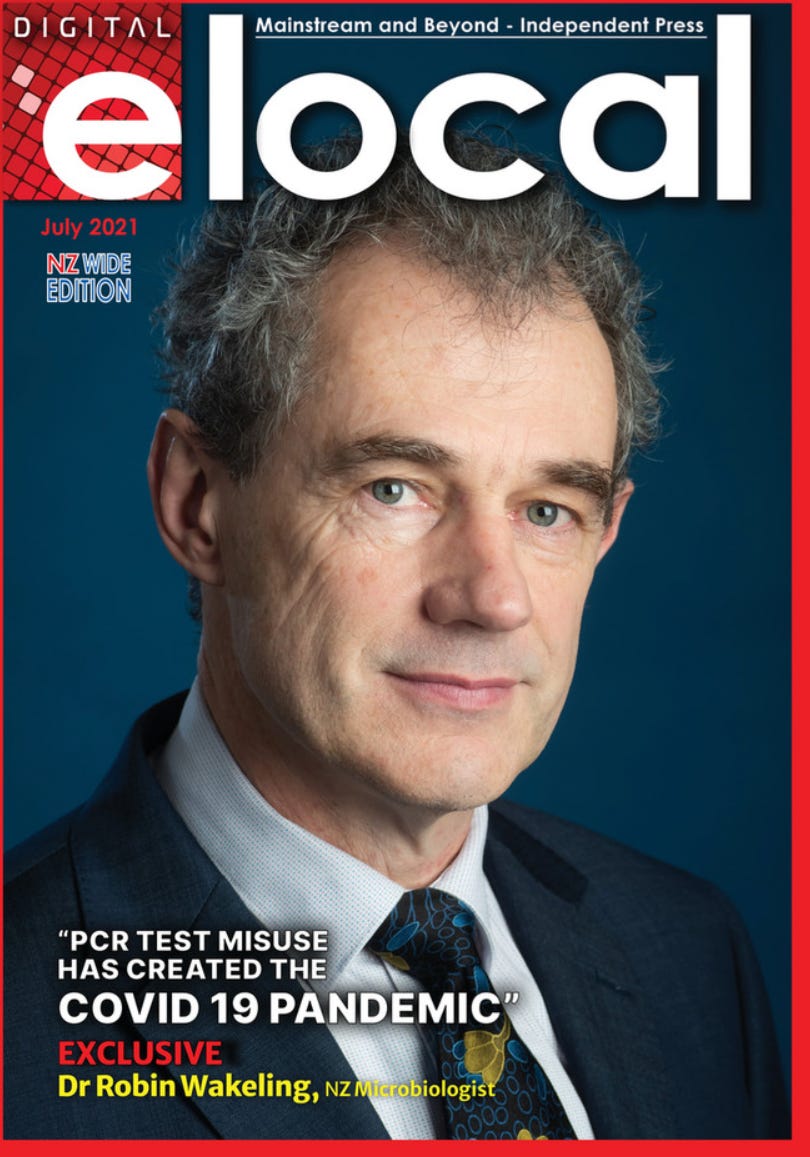
What are the longer-term risks from contamination from 1080? Thirty years after that toxic dump in Winton, there were investigations into various incidents of cattle dying and suffering from unexplained symptoms of poisoning, located in this same area. Of course, the Government-paid ‘scientists’ claimed there was nothing to see here. I wonder what the local public health data looks like?
Gaps in knowledge
The claim is often made that 1080 poison is a ‘natural substance’, ‘safe as a cup of tea’ and ‘biodegradable’. However these statements from DOC and associated agencies are propaganda. 1080 does not easily breakdown into ‘harmless by-products’: it is highly lethal – just one teaspoon of synthetic 1080 poison can kill and harm as many as a hundred adults – it is stable in water, disperses readily through the environment, and in some conditions remains poisonous for months if not years.
Manaaki Whenua Landcare Research Ltd, the NZ Crown research agency tasked with undertaking the tests for DOC, haven’t done adsorption testing and their approved tests only analyses soil washings for 1080 poison – not the breakdown products and the impact on microbes within that soil [3]. Many tests simply do not exist: for instance a test on sandy soils [4], or on honey. As mentioned above, the tests that are used are thirty years old, which is suspicious, considering the enormous progress in scientific testing technologies over this time, and the tonnes of 1080 poison that are repeatedly spread over New Zealand’s land and waterways.
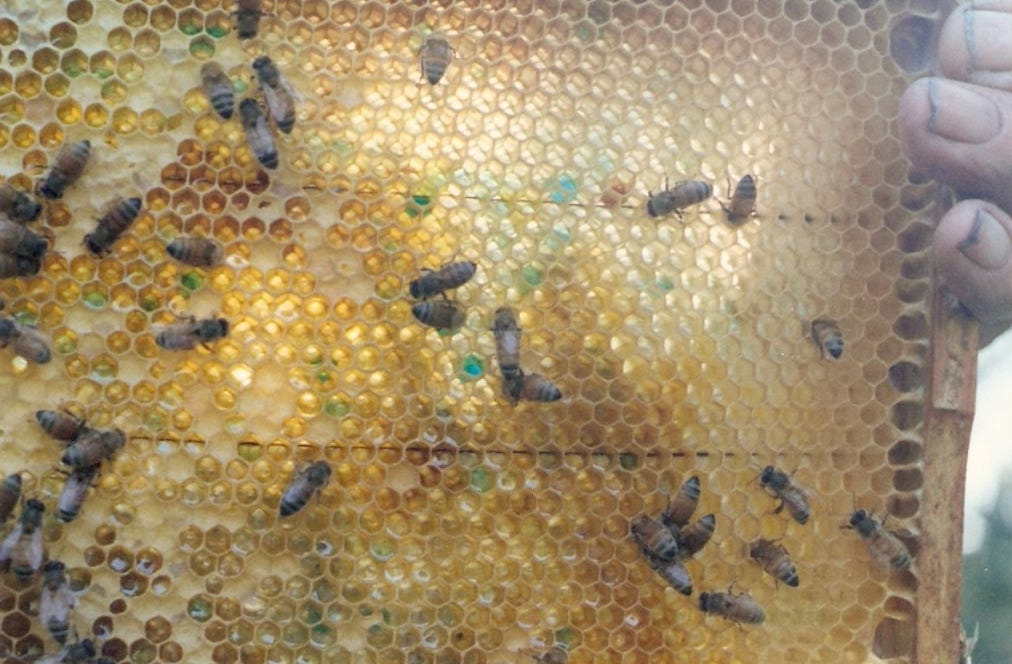
Furthermore, the unwanted 1080 poison baits are dumped in landfill sites without adherence to any of the international guidelines on toxic waste disposal. Appallingly, despite seventy years of aerial 1080 operations, there remains no epidemiological studies into the potential impact on human health. But there are some clues.
In 2015, sixty-six tonnes of 1080 poison baits were intended for an aerial pest control operation in South Island’s Makarora. Poor weather conditions led the DOC operation to be abandoned. The spoiled poison baits were later sent to a Manawatu-Whanganui landfill site (possibly Marton) [5]. Estimating the potential harm from this amount of concentrated 1080 poison in one location is sobering: according to data from the USA EPA’s calculations, this is enough poison to potentially kill over a millions adults and harm many more.
South Island, West Coast
In March 2000, 20 tonnes of 1080 poison baits, that had been stored for between 8 to 20 years, were buried at a West Coast Landfill. Four months after burial, the material and surrounding soils were dug-up, tested and found to have retained some of its original toxicity. The Government website detailing this site was deleted in 2022, however, thanks to the WayBack Machine, we can access the report by scrolling to point 5.8 at this archived version. The original burial at Chesterfield, Awatuna (West Coast of South Island), didn’t go through the appropriate procedures and the unofficial DOC dump had to get retrospective consent from the West Coast Council [6]. Then, after concerned local landowners complained about the potential dangers from the lethal toxins leaching into their water supplies, cattle troughs and crops, it was dug up, treated and finally moved to another landfill site in Canterbury. The long-term consequences from these toxic dumps are unknown.
North Island, Marton
In July 2019, more 1080 poison was buried at Marton. The history of those poison baits originated from a storage shed in Haast, which was swamped during flooding: rising river water damaged over 16 tonnes of toxic 1080 bait. That poison was then transported (presumably across the Cook Strait on a public ferry) to the Marton site. How many other shipments of 1080 poison has Marton received over the years? What water testing has been carried out for that community’s water table? Investigations into water testing from the 1080 poison dumps on the West Coast farmland (mentioned above) have suggested that historically, high levels of other toxins were discovered (with no action taken at that time, by the authorities), but no tests were carried out into levels of 1080 poison [7]. The testing that did occur was undertaken by DOC themselves, raising concerns about the methodology and accuracy of the results because of the inherent conflicts of interest.
Other dumps have occurred throughout the country and most are unknown to the local residents and farmers who are likely to be growing crops and grazing stock and drawing water from bores in these areas. Local councils routinely decline to include the location of any toxic, hazardous sites (from dumps or storage) on a Land Information Memo (LIM) to potential home-buyers and their lawyers. Private water sample tests for 1080 and its metabolites are rarely carried out.
Whanganui Wetland Area
Back in 1996 in Whanganui (only 500m away from one of the Government-funded 1080 poison bait factories) 61 tonnes of 1080 poison cereal bait (containing the higher dose of 0.15% of the toxic chemical) was buried in a shallow, unlined hole at the old landfill site, now known as Balgownie Reserve. Tragically, this area was previously a precious wetland of historical and cultural significance. A primary school, Te Kura o Kokohuia is situated next door.
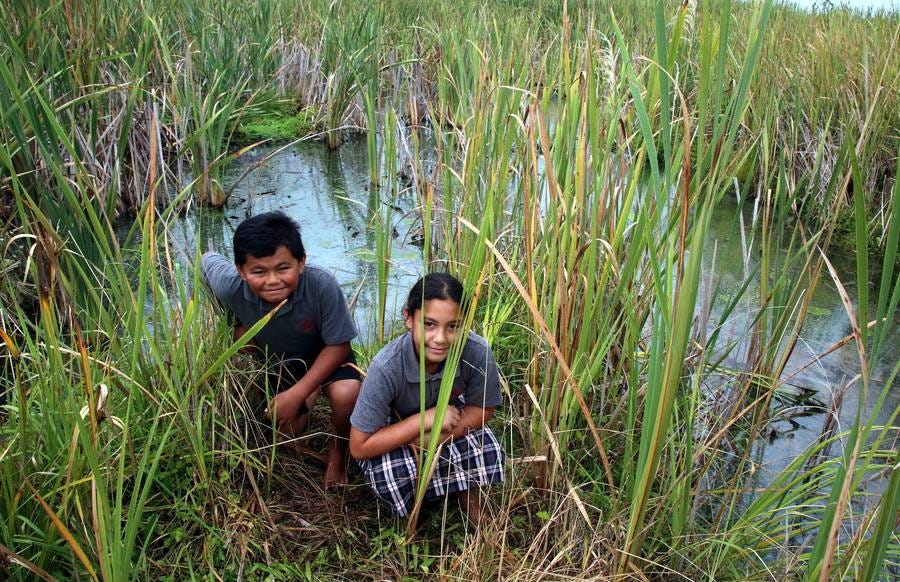
In this 2017 media article, it was explained:
“When the landfill was completely closed, council started thinking about what else could be done with the land there. There was a tiny remnant of wetland left, and a consultant assessed the possibilities.”
In this era of Public Private Partnerships that I’ve written about extensively before, it is no surprise that consultant Alison Davis of Aristos ‘forgot’ to mention in her report to Wanganui District Council that there was 58 tonnes of highly toxic 1080 poison dumped in that landfill. Perhaps she wasn’t aware of it. Or maybe the report did include it, and the council didn’t like that inconvenient truth? Her report does mention how the area is regularly flooded and the existing drainage including the leachate ponds were inadequate [8]. Conveniently now renamed Kokohuia and leased out, I expect Whanganui council would prefer local residents and their children at the school next-door stay ignorant of the dangerous chemicals buried there.
Independent scientists have repeatedly published, just because 1080 poison is ’diluted’ does not mean it is ‘safe’. Even a minute amount – in parts per trillion – could cause harm to human health – especially the vulnerable or the unborn child. We should always adhere to the Precautionary Principle. However, as we know, both the Precautionary Principle and Informed Consent seem to have been abandoned in recent years. In the case of New Zealand’s use of toxic pesticides, I wonder if it was every applied?
Rotorua, Central North Island
Rotorua is a tourist attraction for its healing hot springs. In approximately 2007, two whole steel containers full of old, unwanted 1080 poisoned carrots and/or cereal bait were reportedly buried at the council landfill site [9]. The poison was ‘waste’ from an Epro Ltd 1080 aerial operation over Kaingaroa Forest, part of the large North-Island-based Timberlands Ltd, (registered in Canada). Rotorua Council confirm this landfill site has now been ‘capped’ and predictably deny any knowledge of these toxic containers or whether they have since been moved and the contents legally disposed of. The old landfill lies to the South of Rotorua off the SH30, right beside Puarenga stream which flows into Lake Rotorua. Nearby is Maioha o Parekarangi — the youth offenders’ centre. I wonder where their drinking water comes from?
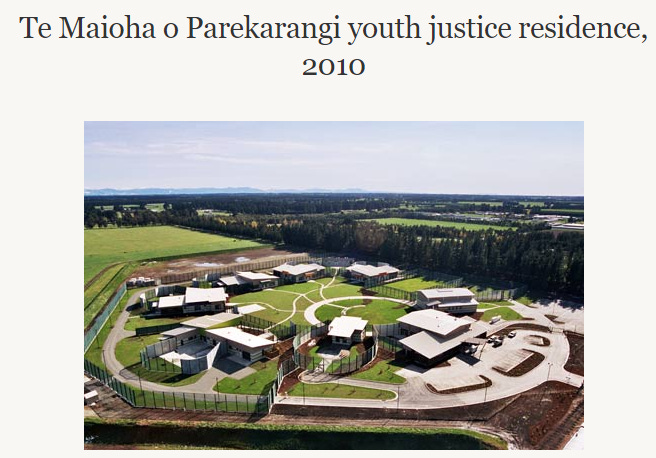
Finally, other landfill sites throughout New Zealand have had 1080 and other chemical poisons dumped within them. Marlborough’s Taylor Pass landfill, which in 2002 had 3 tonnes of toxic poison deposited there, was known to be defective in its construction because reports confirmed parts of the site allowed the toxic leachate to seep into the environment. The North Auckland landfill site (presumably at Redvale) has also been a location for 1080 poison dumps from DoC (eg see App 1 of this document).
In summary
Over recent years, in the USA and throughout Europe, substantial central funding has been allocated towards the expensive task of digging-up old toxic dumps and disposing of the hazardous waste safely. The priority is to address the known - and unknown - public health risks. So perhaps it's unsurprising there are long-running concerns from many New Zealand residents about the health of their community? In 2010 Dr Peter Scanlon (sadly, now deceased), a medical expert, wrote a submission to the ERMA (EPA) NZ Government Committee about his concerns after speaking with many Whanganui women about increased incidents of miscarriages and birth abnormalities that could well be caused by 1080 poison contamination. You can watch a recording of Dr Scanlon (and Dr Weaver) talking about their research here (7 mins):
Perhaps we will never know the extent of the harmful impact victims of pesticide contamination may have suffered over the decades. But many stories have been submitted and recently published by the Peoples Inquiry.
It’s time the New Zealand Government stepped-up to its responsibilities: stop the aerial 1080 poison operations, initiate some valid independent testing protocols and start the crucial clean-up operations of our land and waterways.
And to anyone unsure of the history of the land they live on or from, I would suggest a bit of ‘digging’, like I have done here. But beware, it could produce some toxic surprises.
With many thanks to my poison-free activist friends for doing some of this research. You know who you are! :)
References (for brevity I’ve tried to include hyperlinks where possible, but some citations are hard copy archives only, message me if you need more detail):
[1] E.g. Greymouth Evening Star (2000) 1080 Dump site near Mahinapua 19 August 2000 & Greymouth Evening Star (2000) DOC keeps eye on own dump. 18 August 2000.
[2] OIA Response from Orillion to C Ogilwy 10 May 2019.
[3] OIA response from Landcare to C Ogilwy dated 11 June 2019. Included the quote: “The following processes are used by our Toxicology Laboratory when it is testing for 1080 residues in soil: Aqueous extracts are obtained from soil samples by dispersing in water, centrifuging, then filtering the sample.”
[4] OIA response from Landcare to C Ogilwy dated 9 July. Included the quote: “The method our Toxicology Laboratory uses for detecting 1080 in soil is accredited to IANZ under NZS ISO/IEC 17025 but tests for gravel are not. We have not analysed for 1080 in sand.”
[5] OIA response from DoC to R Thompson dated 23 November 2016
[6] Greymouth Evening Star (2000) 1080 Dumps ‘common’. 10 August. & Greymouth Evening Star (2000) 1080 user has grave reservations about methods (11 August). Also additional documentation available from authors.
[7] OIA response from West Coast DHB to U. Edgington, copies available upon request.
[8] See pg 16 of the commissioned report to the Whanganui Council: "Ecological Assessment and Restoration Opportunities for the Kokohuia Wetland” 2000. (Obtained under OIA).
[9] My own fieldwork, including an interview with retired landfill site staff member.





Once again Ursula ... words fail me ... on how brilliant your work is ... and how stupid Kiwis are ...
I keep saying NZ is run by idiots ... and you keep on proving it ... by orders of magnitude ... time and time again ... and the depth of our stupidity just keeps shocking me ...
I had two school friends from Switzerland many years ago ... who had made their home in NZ ... and they (their parents), just like you ... pointed out ... just how, as Kiwis ... we don't really appreciate what we have in NZ ...
They pointed out how the Swiss appreciated the wildlife in their forests ... and how it was possible to walk in Swiss forests and observe deer that weren't frightened to be in the presence of humans ... and they were disgusted with the way we treated ... and poisoned ... our wildlife ...
It is shocking ... and sad ... to me, as a Kiwi ... to see people from overseas ... having come to live in NZ ... being the ones to point out just what terrible hypocrites Kiwis are ... particularly in light of our very bogus '100% Pure' brand ....
I'm more disgusted by the day at the moment ...
Thank you Ursula ... once again I am very humbled by the exceptionally important work you do ...
pb